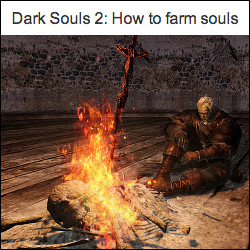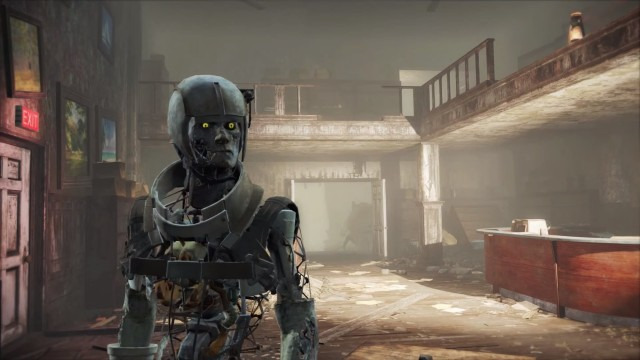

We’ve all felt the pain of dying in this game; it happens an awful lot. If you find yourself dying inordinately and progressing very little, however, it may be time to sit back and muse upon where you’ve been going wrong. Thankfully, we’ve got the answers to your Dark Souls 2 strategy woes.

Humanity in Dark Souls 2
The first thing to remember is that in Dark Souls 2 Humanity is precious, for a number of reasons. The first and most obvious is dying makes you hollow, and being hollow reduces your health until you restore your humanity again, which is done by using Human Effigies. The other benefit of being human rather than hollow is that you will be able to summon up to two phantoms into your world for help with areas or bosses, using your White Soapstone. This can be incredibly useful, especially for some of the more difficult boss stages that involve multiple enemies. Generally you will see summon signs near a bonfire or by the white mist that leads to a boss arena, so if you see one, use it! If you die on the boss stage, you will have to regain your humanity before you can summon again, so take the opportunity to do a few trial runs at the boss again while your health bar is diminishing. Once you feel more confident in your knowledge of the boss’ move set and attack patterns, chug a Human Effigy and roll in with a full party of players at your back.
If you’re running low on Human Effigies, the best thing to do is to return to an area you’re fairly confident that you can clear out relatively easily to earn some souls. I personally found Heide’s Tower of Flame to be a good area for this, as each Old Knight will impart 400 souls once defeated (see the video below for tips on how to easily beat them). If you clear out the entire area once you will earn 3,600 souls or 4,000 for your first run through the area with the non-respawning hammer-wielding Old Knight. The Merchant Hag Melentia sells Human Effigies for 1,500 souls apiece. Beware, however, that her supply is limited and once she has sold the ones in her inventory, she will not restock until she relocates to Majula, at which point she will stock an unlimited amount. Enemies will also drop Human Effigies on occasion, particularly the hounds in The Lost Bastille in my experience. Try clearing out these areas and harvesting any drops, as even if you don’t find any Human Effigies, you can still gain other useful items.
Dark Souls 2 Upgrade Paths
In Dark Souls 2 upgrade paths are also extremely important for your character’s survival; it’s just as important to invest in levelling up your weaker attributes as it is to reinforce your primary skills. Take a look at our list of Dark Souls 2 starting class stats to see the various starting stats if you’re creating a new character. Starting as a Sorcerer, for example, can be much more difficult in certain scenarios as your secondary weapon is a Dagger, which deals minimal damage and can get you into trouble if you run out of magic and end up surrounded by enemies. Because of this, it’s important to raise not only your Intelligence stat but also invest a little in your Strength and Dexterity so that you can use better weapons than the Dagger. If you’ve picked up a weapon along the way that you like, take a look at the STR and DEX requirements and aim to raise your stats to that level. The Shortsword or Longsword can be good choices for this, as they require relatively low STR and DEX to wield: the Shortsword requires 7 STR and 10 DEX while the Longsword requires 10 STR and 9 DEX.
Dark Souls 2 Weapon and Armour Upgrades
Upgrading armour and weapons in Dark Souls 2 is also extremely important, though it’s important to hold off on upgrading items (particularly armour) until you’re satisfied that you’re going to use it for a large portion of the game. A good set of armour to upgrade is the Drangleic set, which you can obtain after defeating the Pursuer. You can generally be more liberal with upgrading your weapons; once you find a weapon that you like, it’s generally feasible to use throughout the rest of the game.

Dark Souls 2 Combat Guide
In the heat of battle, losing your nerve can be your undoing. Here are a few hints and tips to keep you alive on the battleground and preserve the shreds of humanity you have left:
When you have low health, there may be a few different options available to you. You can use an Estus Flask, which will stop you moving while drinking it and leave you vulnerable to attacks from nearby enemies. Bear in mind that you can use Estus Flasks on ladders, which can be a handy trick if you find yourself in a tight spot. This will not always be viable, however.
When there are no ladders nearby or you simply have to keep moving, try using a Lifegem instead. They slow your movement whilst being consumed but if you give yourself enough distance from your foes you should regain full mobility in time to evade any attacks coming your way. Note that Lifegems restore health over time, so it’s critical to avoid further hits to maximise their effectiveness in battle.
If all else fails, the best option is to attempt to run back the way you came. Most enemies will give up the chase after a certain distance or if they lose sight of you, but if nothing else running back to a bonfire can mean the difference between losing your humanity and retaining it. Take a look at the Dark Souls 2 gameplay footage below to get a better idea of this:

Joining Covenants
In Dark Souls 2 Covenants are factions that the player can enter into by choice, resulting in different effects and benefits. There are two Covenants in Majula that you can join, for example, yet only one of them is advisable. At the top of the monument overlooking the sea, talk to the crestfallen Knight until he offers you the opportunity to join the Way of the Blue Covenant, which provides you with a Blue Sentinel bodyguard should someone invade you. The other, The Covenant of Champions, essentially makes enemies tougher, and is therefore a bad idea for your first playthrough of the game. Consult our Dark Souls 2 Guide to Covenants for more information on what each of them does.
Did you find this Dark Souls 2 guide helpful? What other hints and tips do you think we should add in? Let us know in the comments section below!
If you enjoyed reading this, here are a few more you may also like:









